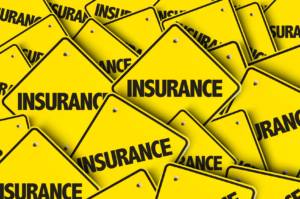 Homeowners insurance is an essential investment for any homeowner, but it doesn’t come at a standard price that you can easily add on to your budget. Every homeowner’s insurance policy is different, taking a variety of important factors into account. Here are the details you need to know to estimate the cost of homeowner’s insurance for your new home.
Homeowners insurance is an essential investment for any homeowner, but it doesn’t come at a standard price that you can easily add on to your budget. Every homeowner’s insurance policy is different, taking a variety of important factors into account. Here are the details you need to know to estimate the cost of homeowner’s insurance for your new home.
Factors Impacting Homeowners Insurance Costs
 There are several things that will impact the total cost of your homeowner’s insurance. Some considerations that will come into play include:
There are several things that will impact the total cost of your homeowner’s insurance. Some considerations that will come into play include:
- Home location
- Value of the home
- Circumstances covered by your policy
- Premium payment arrangements
Naturally, a home that’s worth more will cost more to insure. As you’re probably aware, your neighborhood has a big impact on your home value. If you live in a nicer area, your home is worth more than it would be in another neighborhood, even when all other factors are the same.
Your neighborhood may also determine what threats you’re at high risk for. In a wooded area, you’re more likely to have tree damage. Coastal homes are susceptible to the ravages of hurricanes and tropical storms. If you live in Tornado Alley, you’re far more likely to see this type of damage, while someone in California is at a high risk for earthquakes. Living on a flood plain will impact your insurance as well.
If you want to protect your home from the most significant risks in your area (as you should), you’ll naturally pay more for the coverage. If your home is susceptible to flooding, you’ll pay a premium to get flood coverage.
How you set up your premiums may impact your final loan costs as well. You can often save if you’re able to pay for your entire premium upfront, while the convenience of monthly payments will come at a slightly higher price.
The Average Cost of Insurance
According to the National Association of Insurance Commissioners (PDF), in the United States, the average cost of homeowner’s insurance in 2014 was between $771.00 and $1032.00. Rates have risen steadily in recent years, so you should expect the price of your policy to go up each year. Over the last decade, homeowner’s insurance prices have increased more than 50 percent.
The national average will give you only a rough idea of what to expect when you’re purchasing a homeowner’s insurance policy. Costs vary greatly by state. Florida, Texas, Louisiana, Oklahoma, and Mississippi are the most expensive states for homeowner’s insurance. The cheapest states are Oregon, Idaho, Utah, Wisconsin, and Washington.
Assessing Your Own Costs
If you’re looking for a quick way to estimate the cost of homeowner’s insurance for your dwelling, multiply the value of the house by 0.0025. This will give you a very rough estimate of what you can expect to pay each year for your homeowner’s insurance policy. This calculation assumes that you’re insuring the home for its full sale value with a deductible of $1,000.
For a more detailed estimate of your homeowner’s insurance, you should request a quote from several local providers. You can typically do so online by filling out a detailed questionnaire. Though this is a time investment, it’s worth it to make sure you’re getting the best policy. Always get your estimate in writing. Check the expiration date for the price that you’re quoted. You typically have a set period of time to accept the policy before it expires, and you have to start over with a new quote.
Homeowner’s insurance will protect your home from disasters, theft, and other unexpected circumstances. However, it offers only limited coverage and does not take care of issues that result from regular wear and tear. If you’d like additional coverage beyond what your homeowner’s insurance policy covers, consider investing in a home warranty plan as well.
